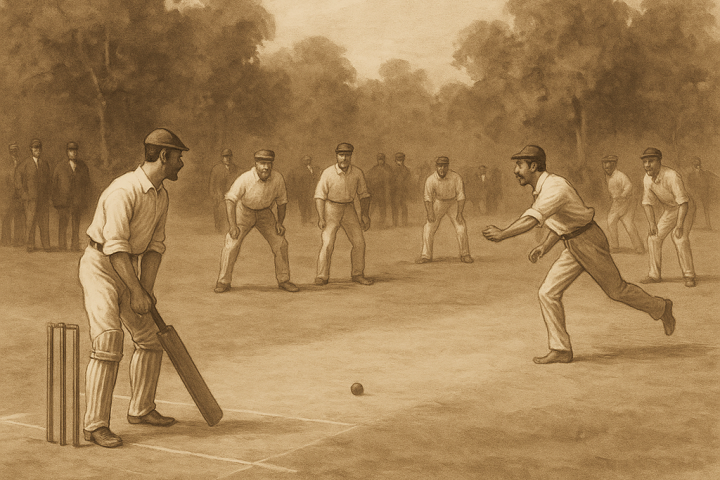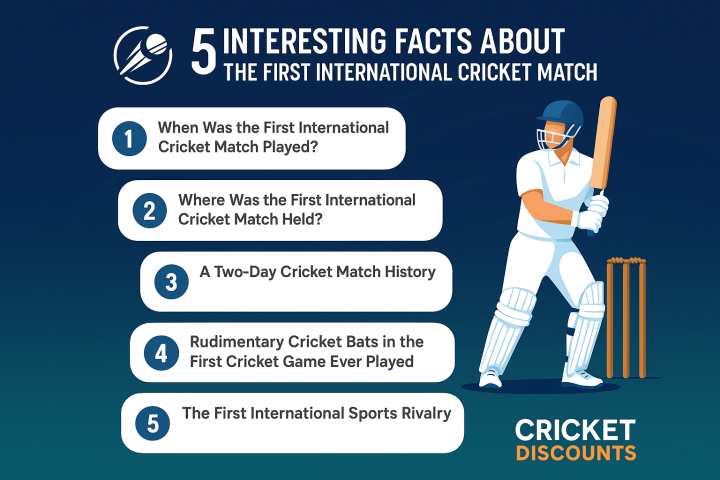The Evolution of Cricket Rules: How the Game Changed Over Time
Cricket, a sport rich in history and tradition, has undergone significant changes over the centuries. From the earliest recorded matches in the 16th century to the high-intensity T20 format of today, cricket's rules have continually evolved to enhance fairness, competitiveness, and spectator engagement. Innovations in gameplay, Cricket gear, and officiating have played a crucial role in shaping the sport. The introduction of standardized regulations, technological advancements, and new playing formats has not only made cricket more dynamic but also expanded its global reach. Whether you're looking for high-quality Cricket bats, affordable Cricket training equipment, or the best Cricket discounts, staying updated with the game’s evolution ensures an enriched experience. Let’s take a journey through the evolution of cricket rules and how they have transformed the game into a thrilling spectacle enjoyed by millions worldwide.
1. The Early Days of Cricket
- Cricket originated in England during the 16th century, played mainly by shepherds and farmers using rudimentary equipment.
- The first known rules were established in 1744, outlining basic gameplay, fielding positions, and scoring methods.
- Initially, underarm bowling was the norm, and bats resembled hockey sticks due to the rolling nature of the ball.
- Matches were often played with only two stumps and a single bail, making it harder for bowlers to get batsmen out.
- The game was largely informal, played in rural villages before gradually evolving into a structured sport with organized competitions.
2. The Birth of Test Cricket (1877)
- The first official Test match was played between England and Australia in 1877.
- Umpiring decisions became more structured with the introduction of LBW (Leg Before Wicket) rules.
- Cricket gear, such as pads and gloves, started gaining importance for player safety.
Upgrade your cricket gear with our exclusive discounts on Cricket Gear.
3. The Introduction of Overarm Bowling
- In the early 19th century, bowlers transitioned from underarm to overarm bowling, allowing them to generate more bounce and variation.
- This rule change brought a major shift in the game, making bowling more competitive and increasing the importance of batting technique. It also led to the development of new batting stances and stroke play.
- The legalization of overarm bowling in 1864 led to modern bowling techniques and strategies, influencing the rise of fast bowling and spin variations that continue to dominate the game today.
4. The Standardization of Cricket Balls
- Early cricket matches used balls of varying sizes and weights, leading to inconsistencies in gameplay.
- In the late 19th century, the standard Cricket ball dimensions (5.5 to 5.75 ounces in weight and 8.81 to 9 inches in circumference) were officially established.
- This regulation ensured fairer competition, allowing bowlers and batsmen to develop consistent techniques suited to the uniform ball.
5. The Standardization of Pitch Dimensions
- The size of the Cricket pitch was not always consistent across different matches and locations, leading to variations in gameplay.
- In 1884, the pitch dimensions were officially standardized at 22 yards in length and 10 feet in width, ensuring uniformity in international cricket and domestic competitions.
- This regulation allowed for fairer competition and eliminated discrepancies that previously existed in different playing conditions, making it easier for players to develop consistent techniques.
6. The Introduction of Protective Gear
- As bowlers became faster and more aggressive, batsmen needed better protection. The late 19th and early 20th centuries saw the introduction of Pads, Gloves, and Helmets.
- The first-ever Protective gear was made of lightweight leather, which later evolved into reinforced padding to enhance safety.
- Helmets were introduced in the 1970s after several injuries, revolutionizing batsmen's confidence against fast bowling.
7. The Introduction of Neutral Umpires
- Historically, umpires were often from the home country, which sometimes led to biased decisions.
- In 1992, the ICC introduced neutral umpires for Test matches to improve fairness and credibility in international cricket.
- This move strengthened the integrity of the game, ensuring more impartial decision-making and reducing potential favoritism.
8. Limited-Overs Cricket Revolution (1970s–1990s)
- One Day Internationals (ODIs) were introduced in 1971, offering a shorter and more exciting format.
- Fielding restrictions and colored kits were introduced to enhance viewer appeal.
- The 1992 Cricket World Cup saw the introduction of the white ball and floodlit day-night matches.
9. The Impact of Fielding Restrictions
- To balance the game between batsmen and bowlers, fielding restrictions were introduced in limited-overs cricket, beginning in the 1980s.
- Powerplays were later implemented, ensuring attacking field settings at the start of an innings, making the game more exciting.
- These changes forced teams to rethink their strategies, leading to aggressive batting and innovative stroke-making, particularly in ODIs and T20s.
10. The T20 Era and Modern Innovations
- The first official T20 international was played in 2005, revolutionizing the sport.
- Powerplays, free hits, and DRS (Decision Review System) were introduced to make the game more engaging.
- T20 leagues, such as the IPL and BBL, have attracted global audiences and transformed cricket into an entertainment spectacle.
Find the best deals on cricket bats for beginners at Cricket Bats.
11. The Role of Technology in Cricket
- The introduction of Hawk-Eye, Snickometer, and UltraEdge has improved umpiring accuracy.
- Fitness tracking and AI-driven analytics help teams strategize better.
- Innovations like LED stumps and smart helmets enhance the game’s safety and aesthetics.
12. The Future of Cricket Rules
- Proposals for shorter formats and franchise-based competitions are shaping the future of cricket.
- Sustainability initiatives, such as eco-friendly stadiums and biodegradable cricket gear, are gaining traction.
- Discussions continue around improving player workload management and maintaining the balance between bat and ball.
Conclusion
Cricket has come a long way from its humble beginnings, adapting to the changing times while maintaining its essence. Whether you’re a seasoned player or just starting, having the right equipment is essential to enjoying the game.
🏏 Shop now and experience the thrill of the game with top-quality cricket gear at unbeatable prices!
🛒 Visit Cricket Discounts today and save big on your next cricket purchase! Explore our latest
If You Want to Read More Blogs about Cricket You Can!Click Here
If You Want to Read More Blogs about Cricket News and Updates You Can! Click Here
If You Want to Read More Blogs about Cricket Gear Guides You Can! Click Here
If You Want to Read More Blogs about Cricket Tips and Tricks You Can! Click Here
If You Want to Read More Blogs about Product-Focused Blogs You Can! Click Here
If You Want to Read More Blogs about Sales and Offers You Can! Click Here
If You Want to Read More Blogs about Fitness and Training for Cricketers You Can! Click Here
If You Want to Read More Blogs about History and Fun Facts About Cricket You Can! Click Here








Leave a comment